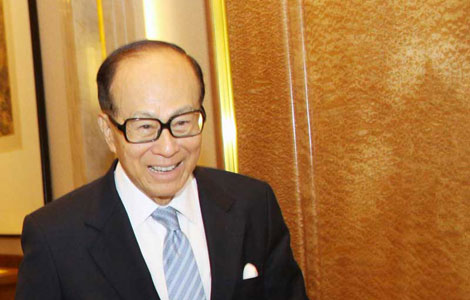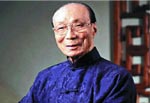Analysts weigh in on effects of reform in 2014
Updated: 2014-01-10 01:01
By Emma Dai in Hong Kong (China Daily)
|
||||||||
While Beijing pushes for sweeping reforms to ensure long-term and sustainable growth, economists are worried about the short-term negative impact, Emma Dai reports from Hong Kong
As the structural reforms outlined at the Third Plenum of the 18th Central Committee of the Communist Party of China in November begin to unfold, economists in Hong Kong are expressing mixed feelings about the investment environment on the mainland.
Although the reforms, whose goal is a more sustainable development model, are viewed as ultimately positive for the Chinese economy, this year may be too soon to see concrete results, many experts said.
Instead, the market is likely to see modifications, especially in industries plagued by overcapacity, said Pu Yonghao, regional chief investment officer at UBS AG.
"Although we are happy about the message sent out by the Third Plenary Session, one must be aware that, in the short to mid-term, there is still much to be done to address China's structural problems."
"Short-term pressure on GDP growth is undeniable, as the new leadership has put structural reform at the top of its to-do list," Pu said.
He added that while stock market fluctuation is sure to come, many sectors — especially heavily polluting ones — will be reshuffled.
"It has yet to affect the listed companies, but smaller ones, such as tiny steel mills in the northern provinces, are shutting down."
He cautioned that if the market is going to play a "decisive" role in the economy, as cited by the reformative plan, investors should be aware that freer competition also can lead to negative results such as bankruptcy.
"We should be aware of the risks stemming from the reform," he cautioned.
The recent reform blueprint has been called the boldest package of policies seen in decades in China. On the economic front, it vows to reduce the level of government intervention to let the market play a decisive role in the allocation of resources. The plan also sets liberalization of interest rates, SOE reform and urbanization as key themes.
In a December report, Standard Chartered Bank Plc called 2014 a "make or break year" when it will be vital for China's new leadership, which assumed office in March, to effectively implement the economic reforms.
The bank forecast 7.4 percent real GDP growth in 2014 for the nation, with growth in the first half slightly stronger than in the trailing half.
But the report also stressed that "the net impact of reform on short-term growth is tricky to call" as the People's Bank of China, the country's central bank, begins its attempt to deleverage the economy.
"We expect bank loans to grow 11 percent in 2014 to 8.5 trillion yuan ($1.4 trillion), slowing from 14 percent growth in 2013," the Standard Chartered report said.
"Non-bank credit growth is also likely to slow. Total credit growth is highly likely to remain above nominal GDP growth, so 2014 will be a year of more gradual leveraging up. We expect deleveraging to kick in only in 2015-16."
Slowdown pressure
That echoes the forecast of UBS.
"We estimate that the growth rate of aggregate financing to the real economy will slow down gradually in 2014," Pu said, adding that in the aftermath of the 4 trillion yuan stimulus package in 2008, credit has grown twice as fast as GDP in China.
"That leads to low efficiency of credit and a bubble in various industries. So, there is room for the central bank to tighten credit."
In the face of an asset bubble and shadow banking, the central bank curtailed funding for the interbank lending market, boosting the overnight Shanghai offered rate was as high as 13 percent. Otherwise, the rate is usually in the rage of 2 to 3 percent.
Earlier in December, the benchmark interbank rate soared again to above 8 percent, adding tension to the financial market. In response, the central bank injected more than 300 billion yuan through short-term liquidity operations on Dec 20, followed by another 29 billion yuan through a reverse-repurchase agreement on Dec 24.
As interbank rates declined, the PBOC canceled the regular seven-day reverse-repurchase operation on Dec 31.
But the central government faces a dilemma in taming runaway credit growth, as it could harm the economy if it clamps down too fast or too hard.
"By and large, credit will be tight next year," said Shen Minggao, head of China research for Citibank, which forecasts a 7.3 percent GDP growth for the country in 2014.
"The cost of capital is already rising in China, and the trend is likely to continue," Shen said.
"There is pressure to rein in rising inflation. There will also be capital outflow as the United States carries out its tapering plan. What's more, if property prices keep going up, it will provide one more reason for the central bank to tighten the money supply," he said, adding that more expensive loans will lead to lower margin and smaller appetite for investment, which in turn will translate to slower growth.
But he stressed that not all companies will experience tight liquidity, as capital costs vary among sectors.
"When local government and SOEs get credit, it's harder for private sectors to access the resource. The crowding-out effect is obvious," Shen said.
"But the investment efficiency of SOEs and local governments is low. So the key to sustainable growth is whether remnant assets can be liquidized by those who enjoy cheap funding, and for those who are able to use it efficiently. Only if the reform is implemented can the liquidity problem be solved and the capital costs for private sectors decline."
According to Pu with UBS: "Policies will support the structural reform. In the future, it will be harder for industries that fall out of favor to get credit."
Finding a bright side
While the structural reform and tightened credit are clearly short-term negatives, there are factors worth noticing on the bright side, as well.
"China is on its way up in the economic cycle, which is positive in terms of investment environment," said Chi Lo, Greater China senior strategist of BNP Paribas Investment Partners.
"Various data from power consumption and logistics records to car sales all show that the recovery is steady and that growth is vibrant," he said, adding, "It's a good sign for investors."
The bank expects China's GDP growth rate to be in the 7.5-to-8-percent range in 2014.
"Although downward pressure is likely to continue for A shares, there will be ups and downs during the year, and that's where the investment opportunities lie," said Lo. "Instead of benefiting from a general market uptick, it's critical to choose the right sectors and the right companies in 2014."
According to Lo, non-banking financial institutions such as brokers and insurance companies may also stand to benefit in the short term, especially those doing cross-border yuan business. The green economic sector also will gain as the authorities focus on high-quality GDP.
And while the luxury sector will continue to underperform, due to governmental crackdowns on corruption, domestic consumer industries, such as tourism and education, are likely to see investors flock to them, he said.
At the same time, Citibank's Shen pointed out that instead of the GDP growth rate, investors are more concerned with upcoming details of the reform and how the authorities are going to implement them.
"The Chinese economy grew fast in the last two years, but the A shares didn't perform. Now, all eyes are on whether the reforms will be able to boost market confidence," said Shen, adding that investors believe that as long as the reforms successfully lift market sentiment, stocks will gain even with a lower GDP growth rate.
"The reforms can lead to market sentiment normalization," he said. "Currently, the price-to-earnings ratio of China's banking sector stands at around 5.6, which is extremely low compared with an average of 10 to 12 in other emerging markets, except Russia.
"If there is a re-rating, we expect the banking sector's P/E to rise to 7. The sector, along with the capital goods sector, should boost the MSCI China Index by 20 percent by the end of 2014."
Contact the writer at emmadai@chinadailyhk.com
- Taiwan entrepreneur applauds Pingtan business registration reform
- Proposed pension reform divides opinion
- Cuba to partially privatize taxi service
- Chief judge paves way for reforms
- Boao Forum 2014 to be held in April
- Marketization the key to economic system reform
- Government to further streamline administrative approvals

 Migrants feel pain of separation
Migrants feel pain of separation
 Websites to be liable for sales of bad food, medicine
Websites to be liable for sales of bad food, medicine
 Largest sushi mosaic created in HK
Largest sushi mosaic created in HK
 UK police pick through US helicopter crash site
UK police pick through US helicopter crash site
 Riding the waves down under
Riding the waves down under
 The long-living rich in China
The long-living rich in China
 US skiing star Lindsey Vonn out of Sochi Olympics
US skiing star Lindsey Vonn out of Sochi Olympics
 Overseas cemeteries for Chinese dead
Overseas cemeteries for Chinese dead
Most Viewed
Editor's Picks

|

|

|

|

|

|
Today's Top News
China's role in Middle East will be enhanced: FM
Fishing rules are 'normal practice'
Analysts weigh in on effects of reform
Higher targets for emission reduction
The changing face of Chinese ODI in US
China imports more US-built cars
China has most outbound tourists
Top court seeks judicial transparency
US Weekly

|

|






